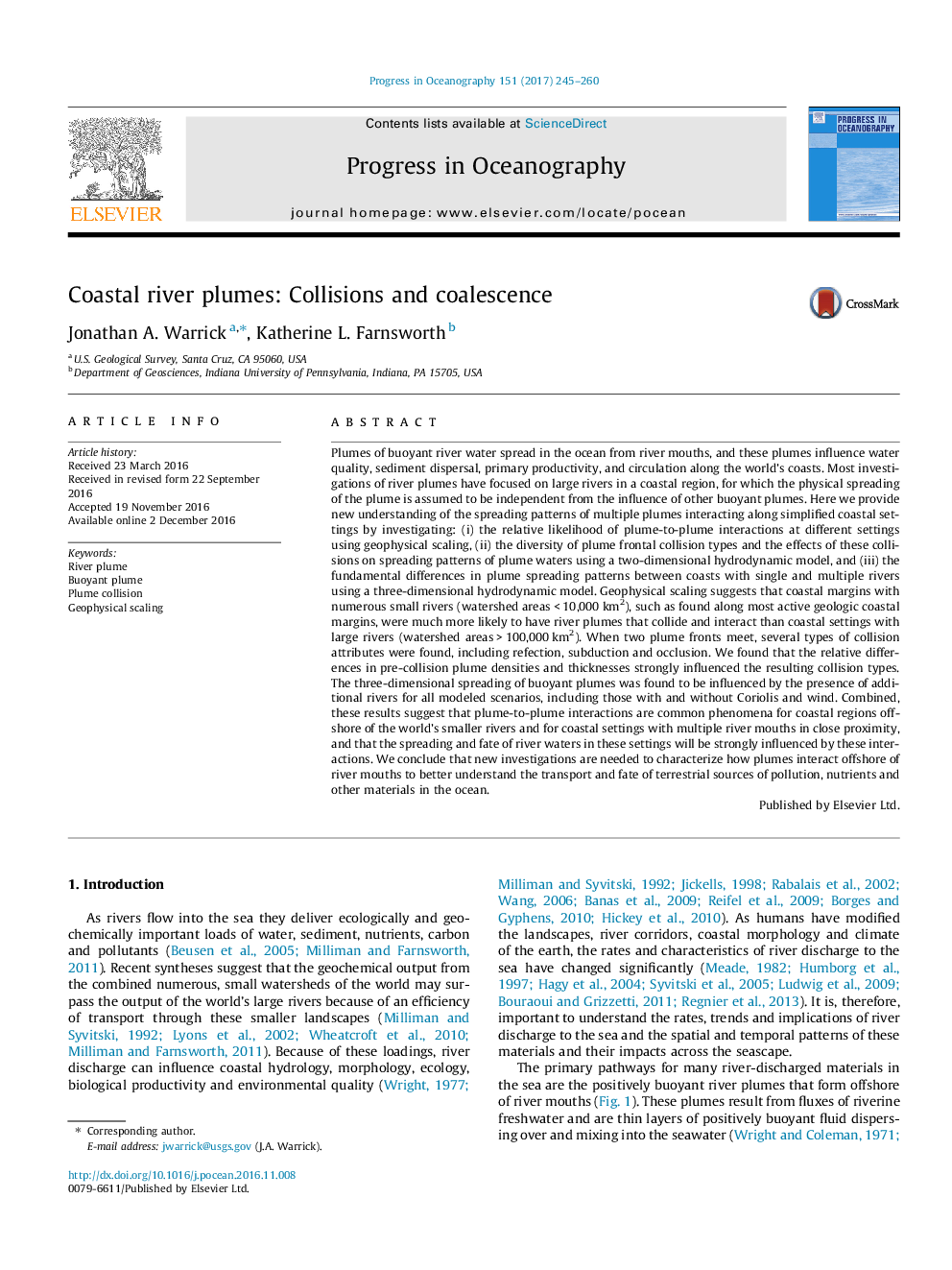| کد مقاله | کد نشریه | سال انتشار | مقاله انگلیسی | نسخه تمام متن |
|---|---|---|---|---|
| 5766527 | 1627907 | 2017 | 16 صفحه PDF | دانلود رایگان |
- Geophysical scaling was used to describe global patterns of river plume collisions.
- When two river plumes meet, several types of collisions may occur.
- Differences in plume densities and thicknesses dictate plume collision types.
- Spreading patterns of coastal plumes (in 3D) are influenced by frontal collisions.
Plumes of buoyant river water spread in the ocean from river mouths, and these plumes influence water quality, sediment dispersal, primary productivity, and circulation along the world's coasts. Most investigations of river plumes have focused on large rivers in a coastal region, for which the physical spreading of the plume is assumed to be independent from the influence of other buoyant plumes. Here we provide new understanding of the spreading patterns of multiple plumes interacting along simplified coastal settings by investigating: (i) the relative likelihood of plume-to-plume interactions at different settings using geophysical scaling, (ii) the diversity of plume frontal collision types and the effects of these collisions on spreading patterns of plume waters using a two-dimensional hydrodynamic model, and (iii) the fundamental differences in plume spreading patterns between coasts with single and multiple rivers using a three-dimensional hydrodynamic model. Geophysical scaling suggests that coastal margins with numerous small rivers (watershed areas < 10,000 km2), such as found along most active geologic coastal margins, were much more likely to have river plumes that collide and interact than coastal settings with large rivers (watershed areas > 100,000 km2). When two plume fronts meet, several types of collision attributes were found, including refection, subduction and occlusion. We found that the relative differences in pre-collision plume densities and thicknesses strongly influenced the resulting collision types. The three-dimensional spreading of buoyant plumes was found to be influenced by the presence of additional rivers for all modeled scenarios, including those with and without Coriolis and wind. Combined, these results suggest that plume-to-plume interactions are common phenomena for coastal regions offshore of the world's smaller rivers and for coastal settings with multiple river mouths in close proximity, and that the spreading and fate of river waters in these settings will be strongly influenced by these interactions. We conclude that new investigations are needed to characterize how plumes interact offshore of river mouths to better understand the transport and fate of terrestrial sources of pollution, nutrients and other materials in the ocean.
Journal: Progress in Oceanography - Volume 151, February 2017, Pages 245-260
